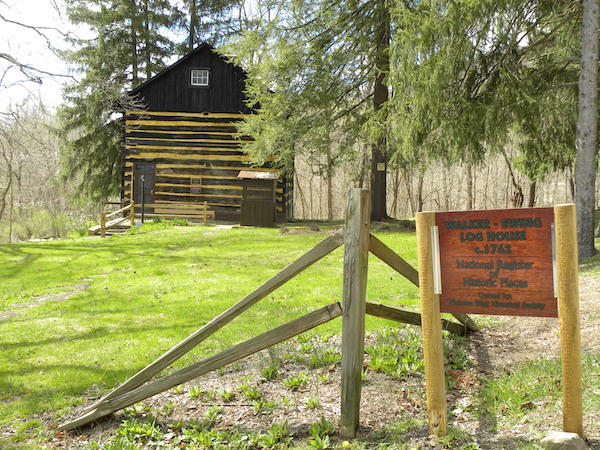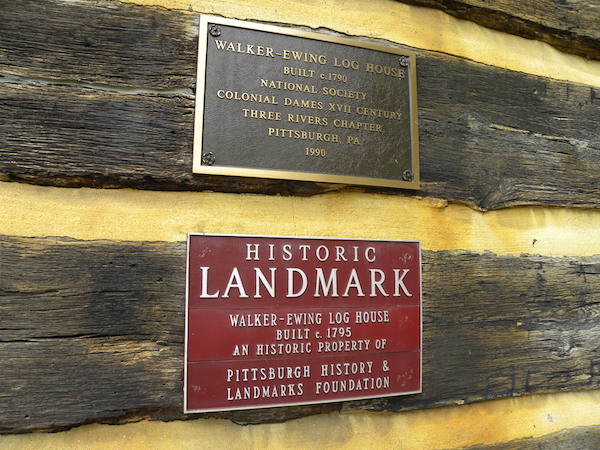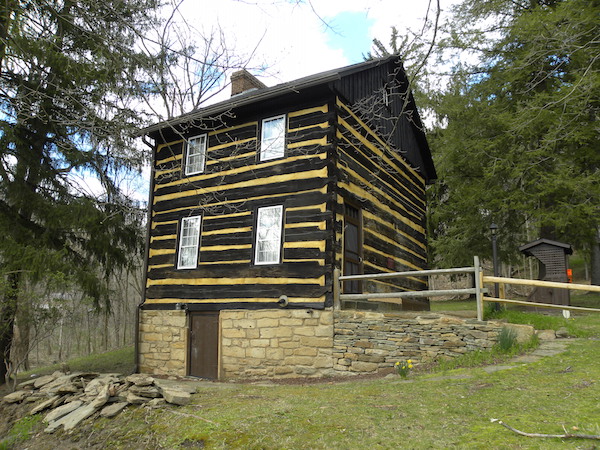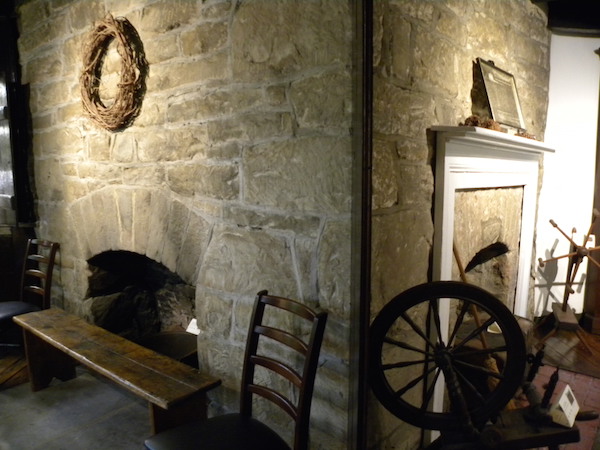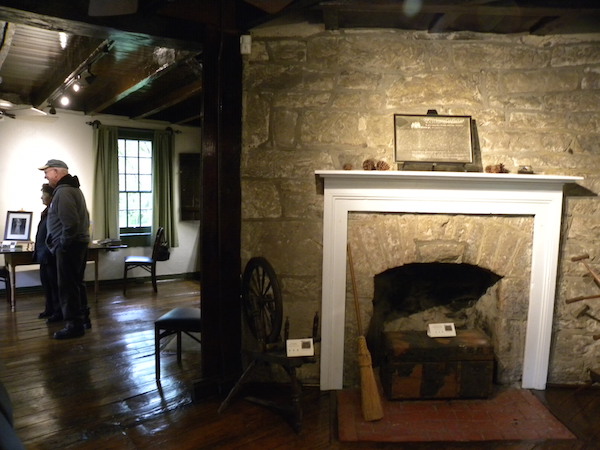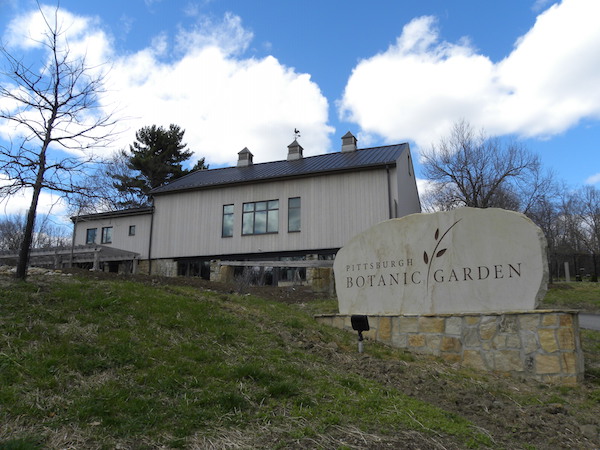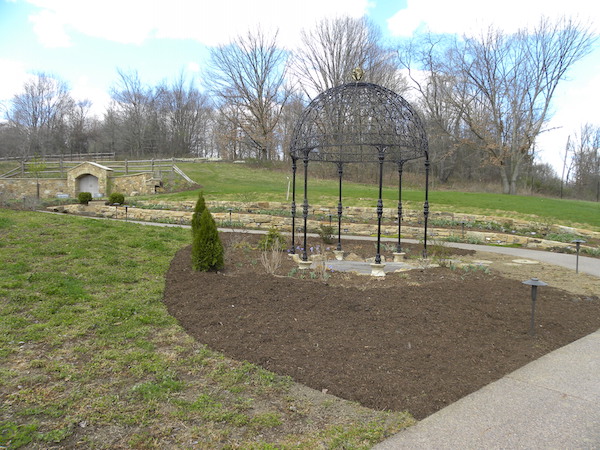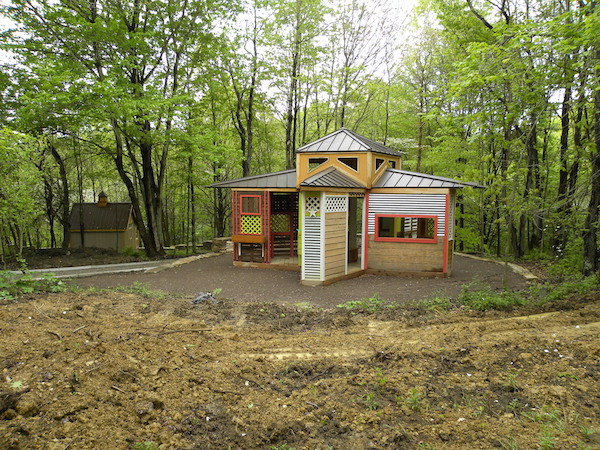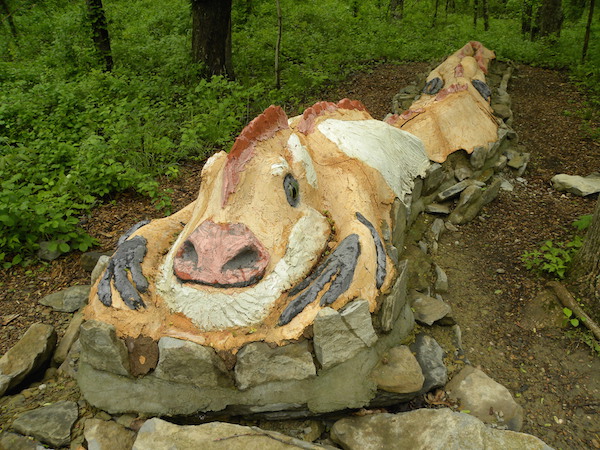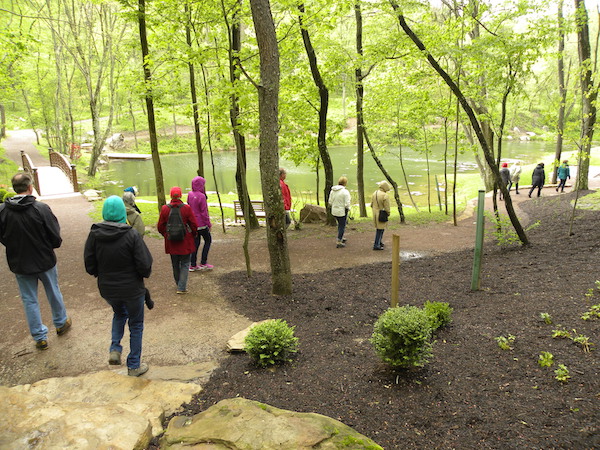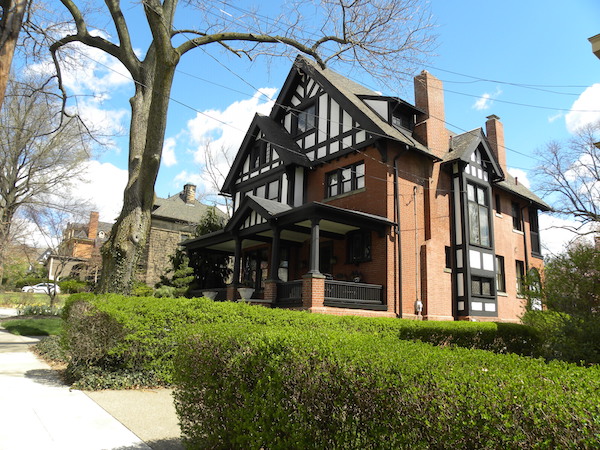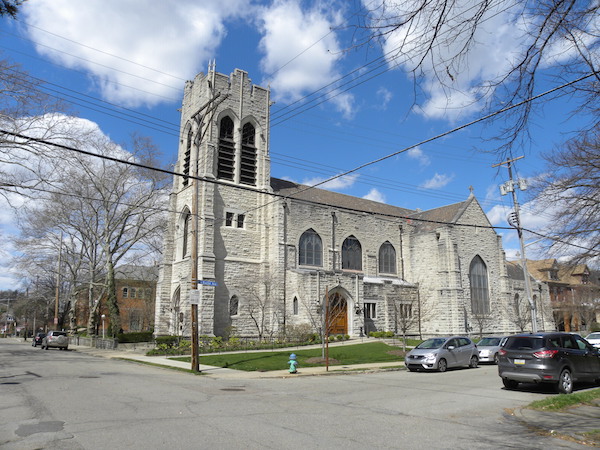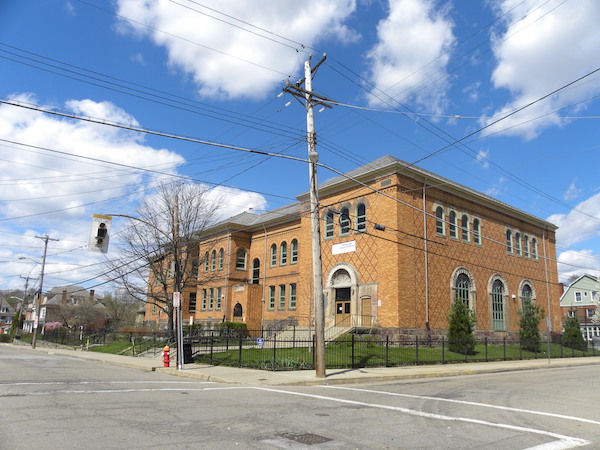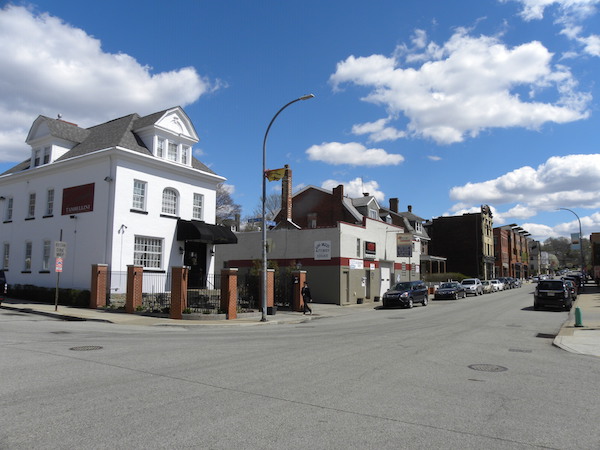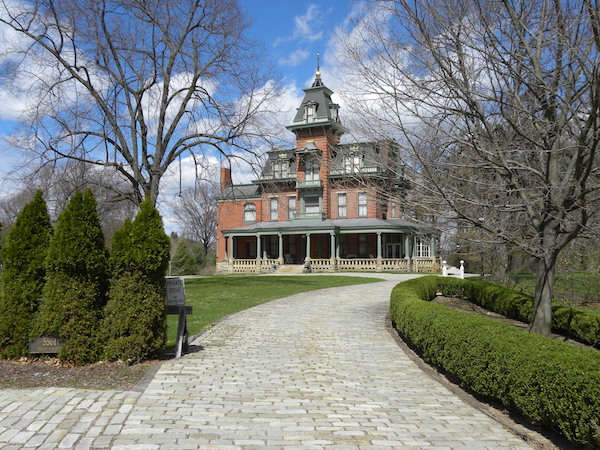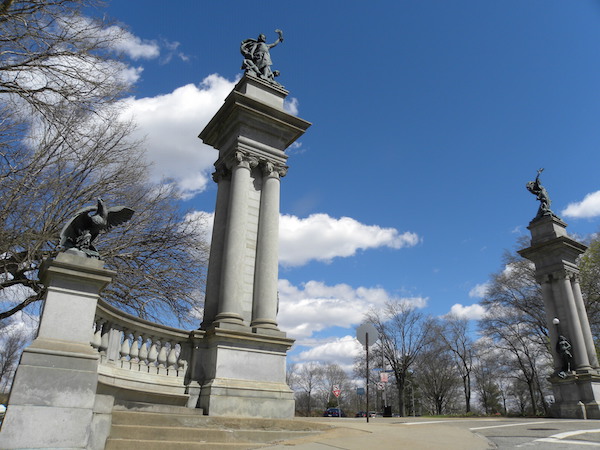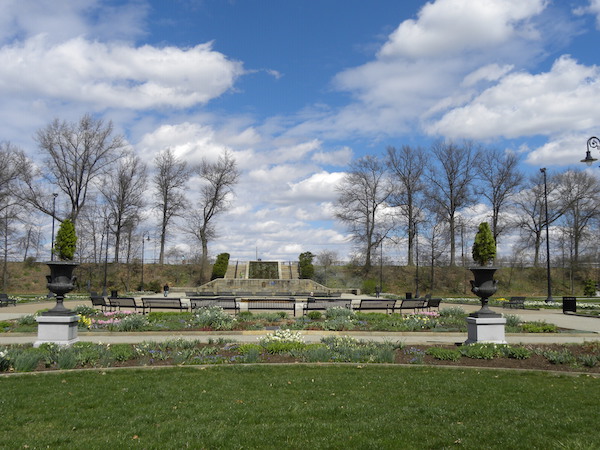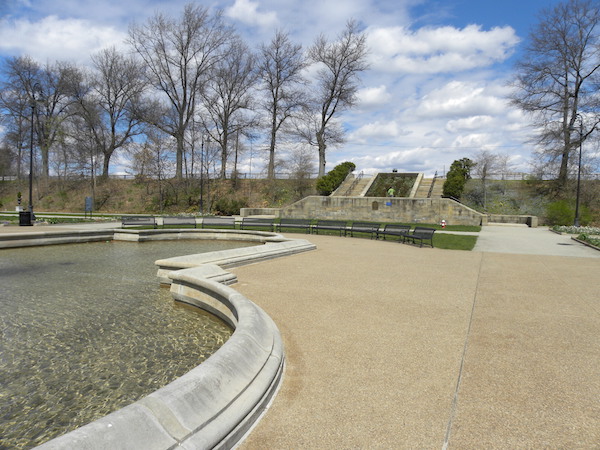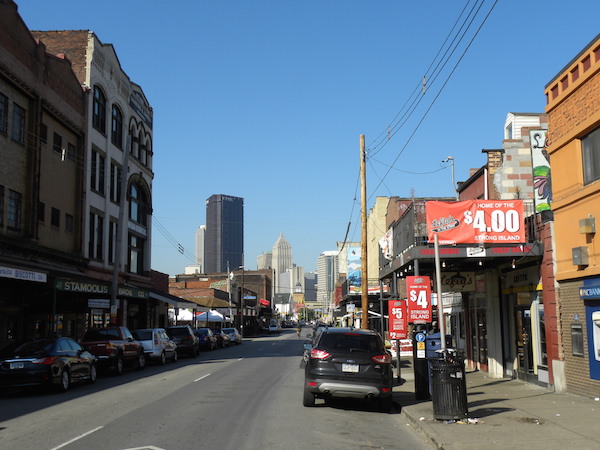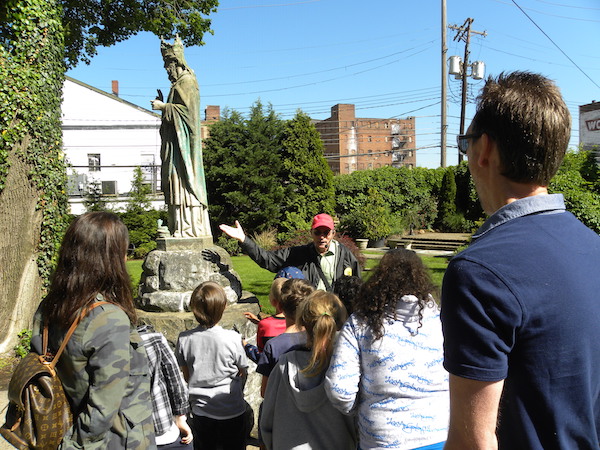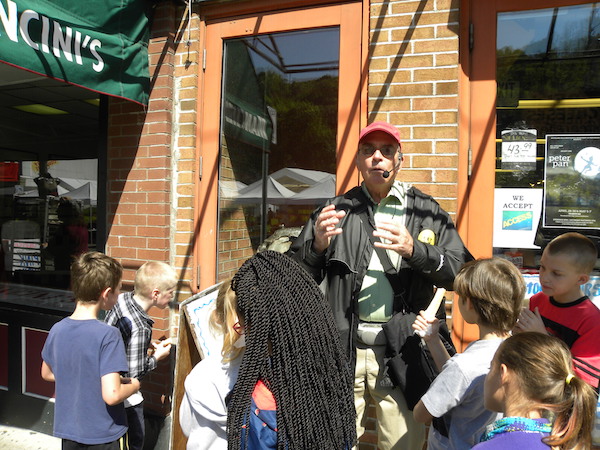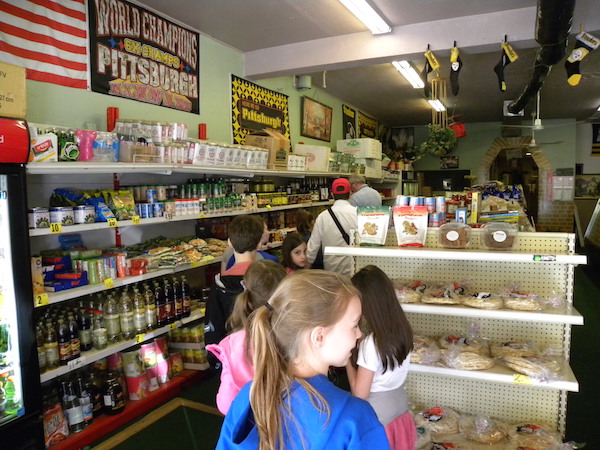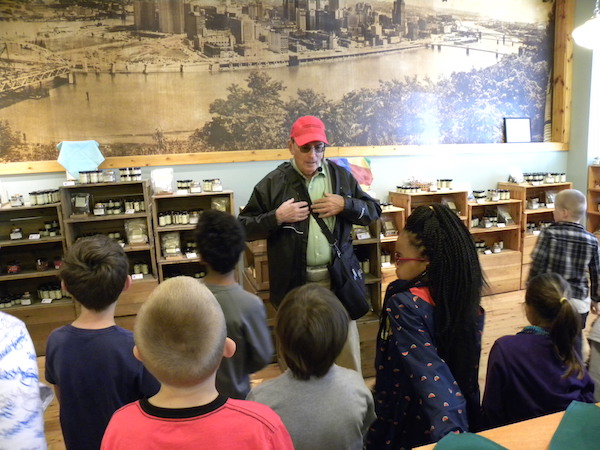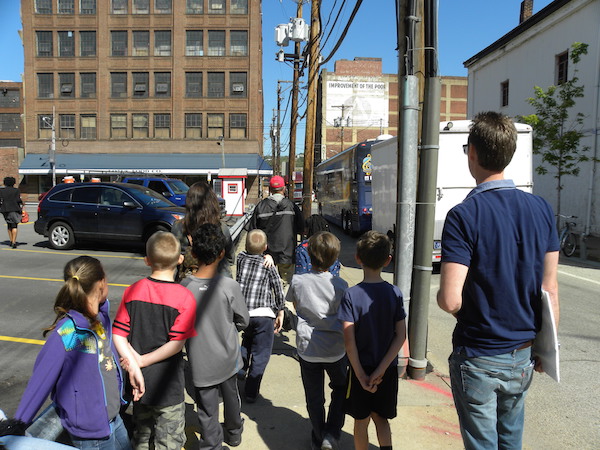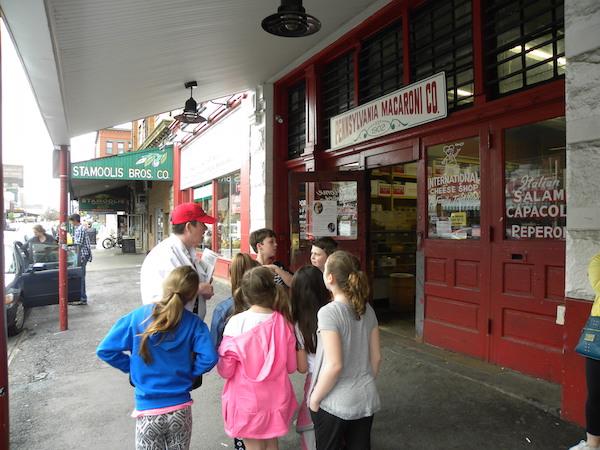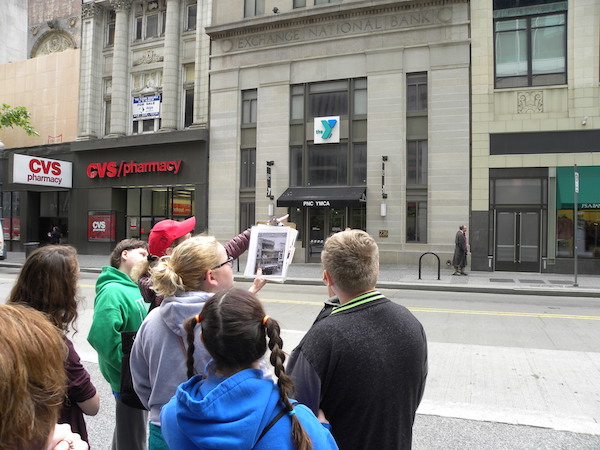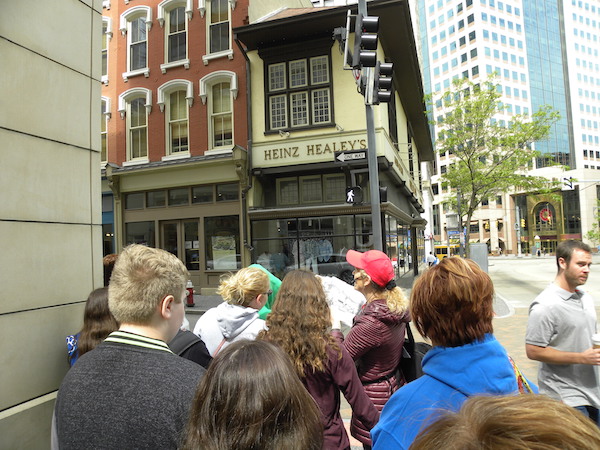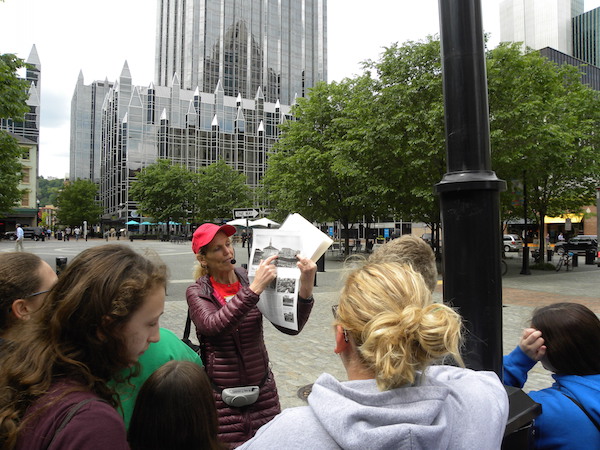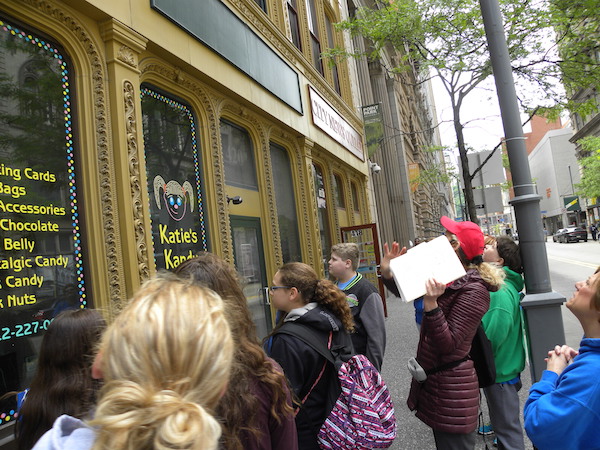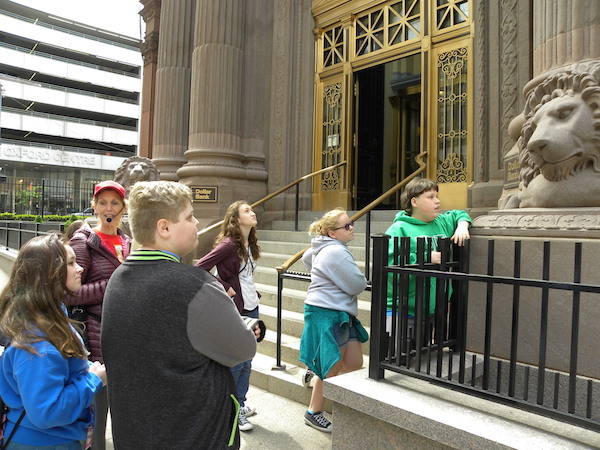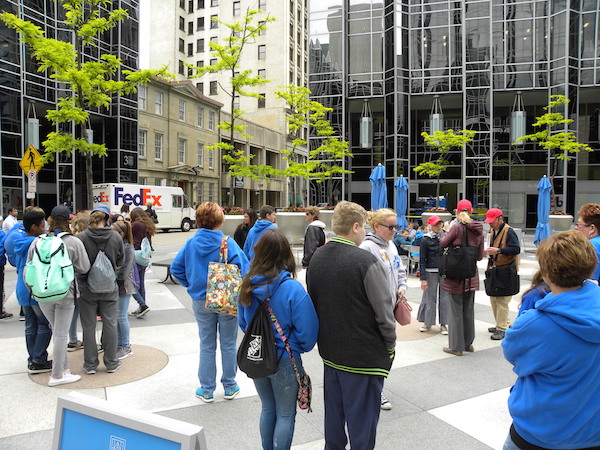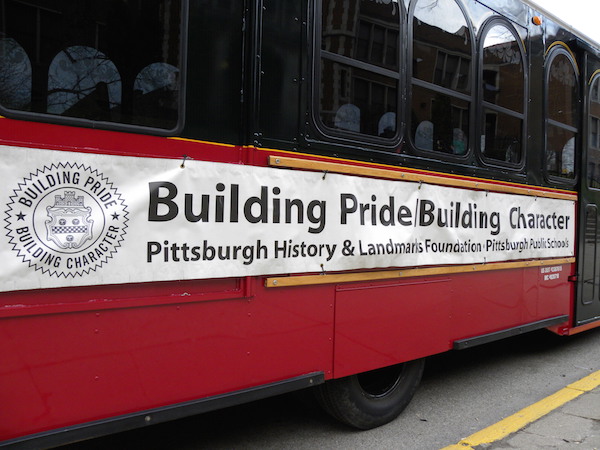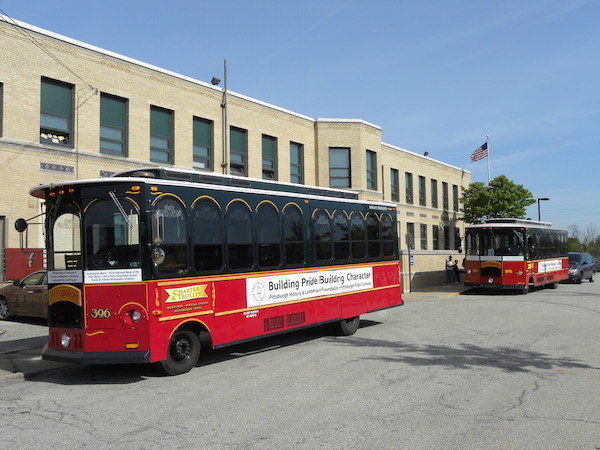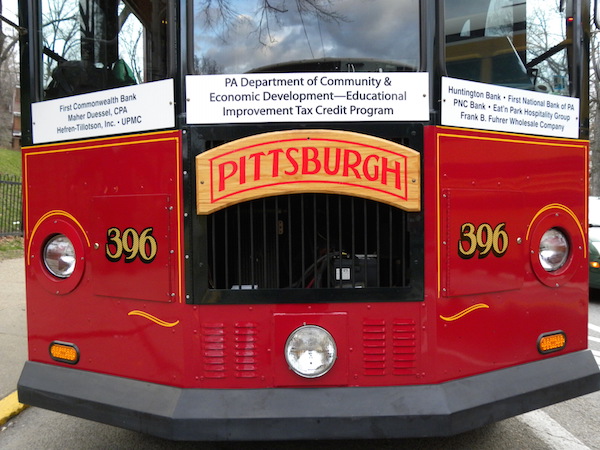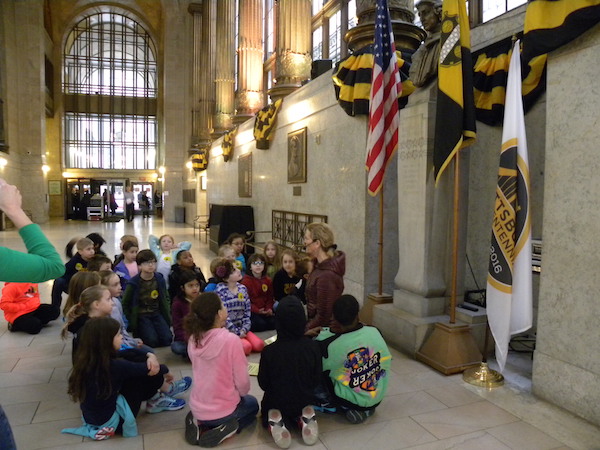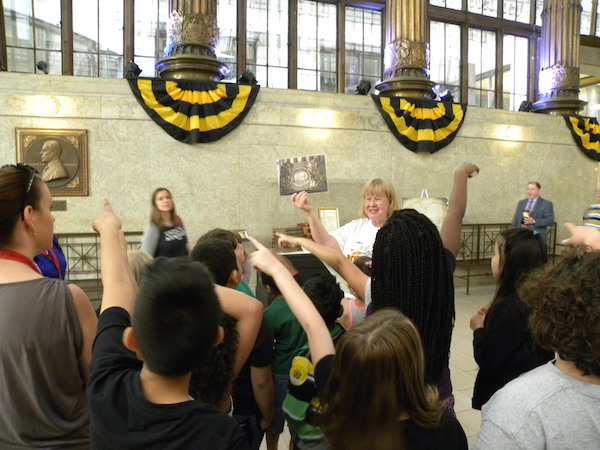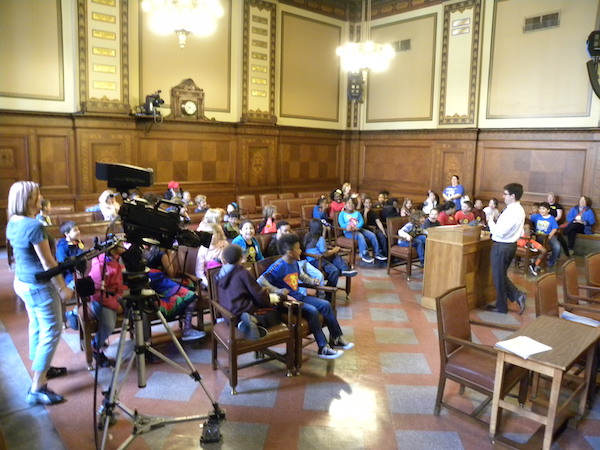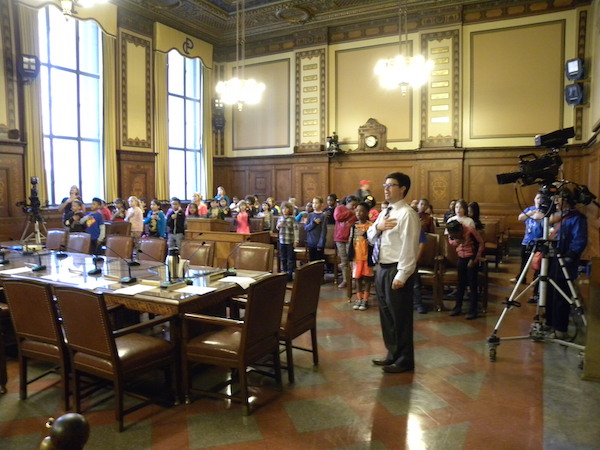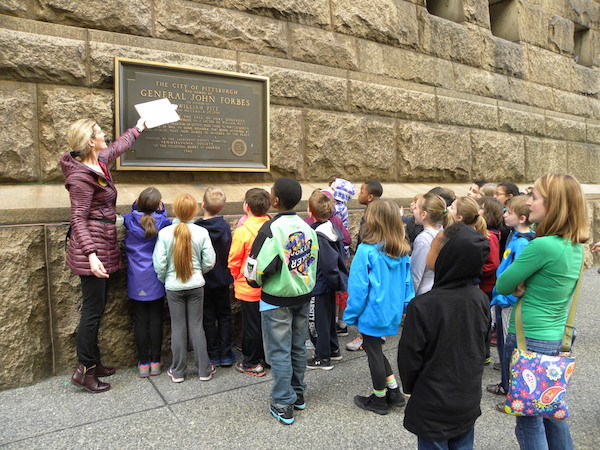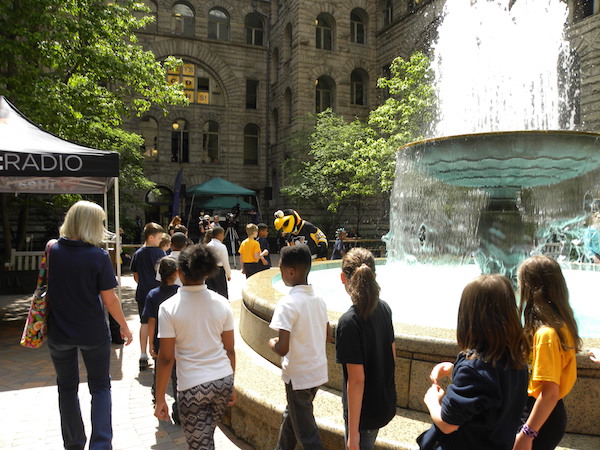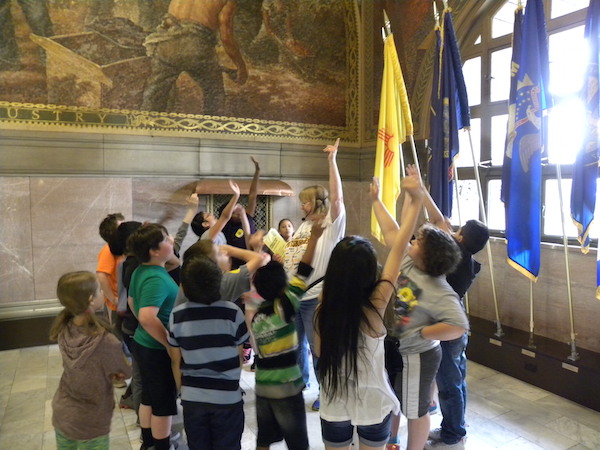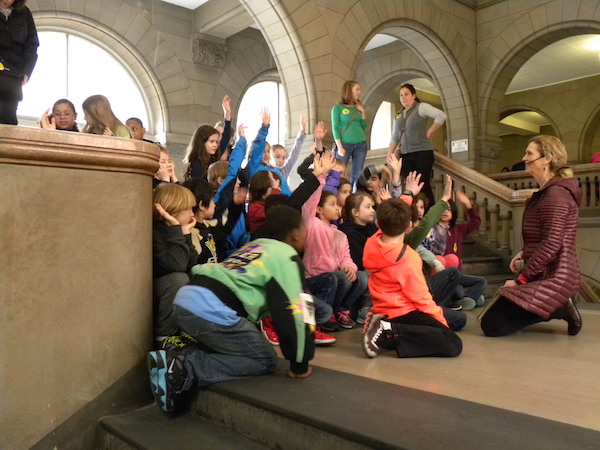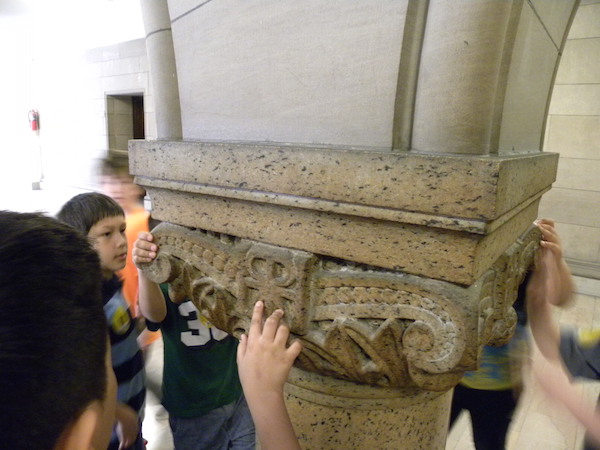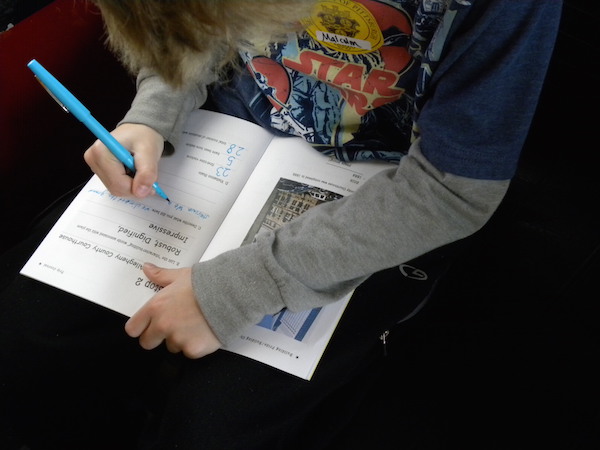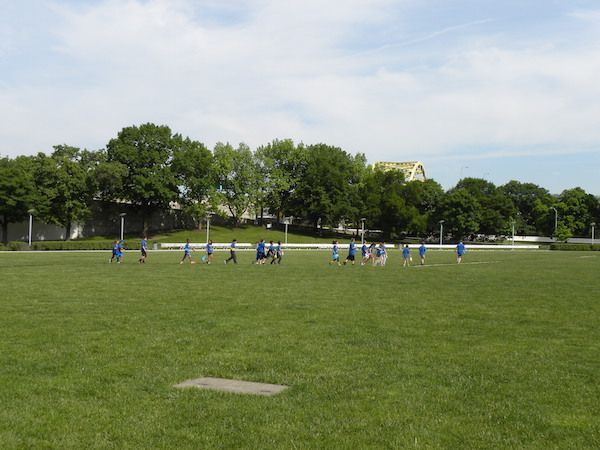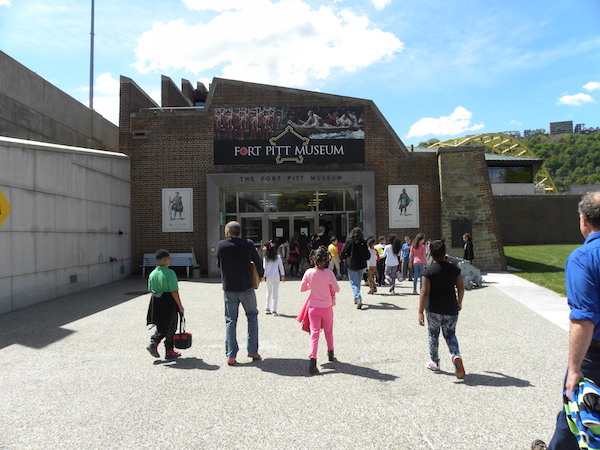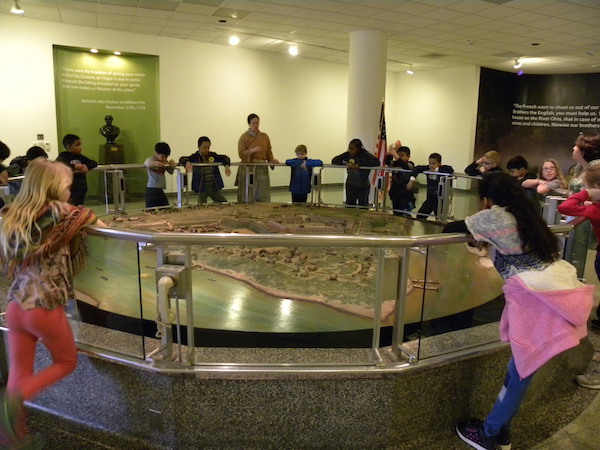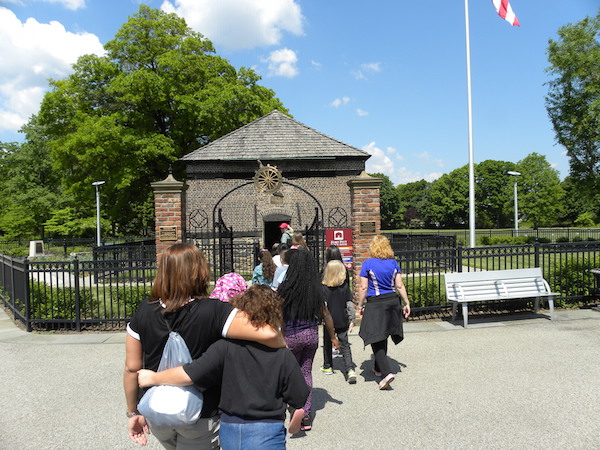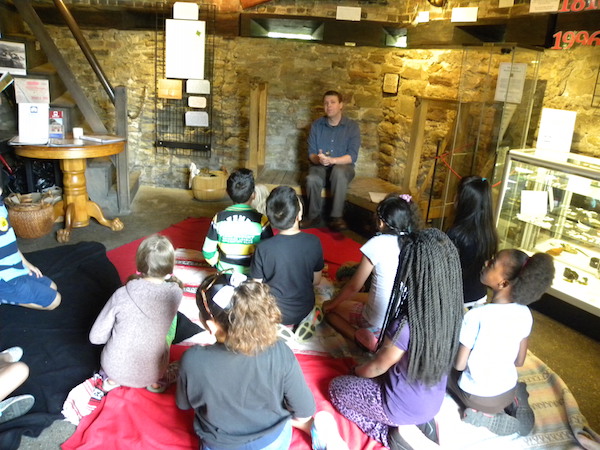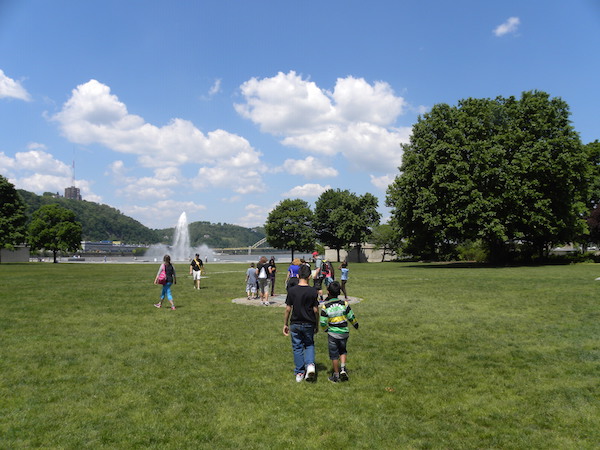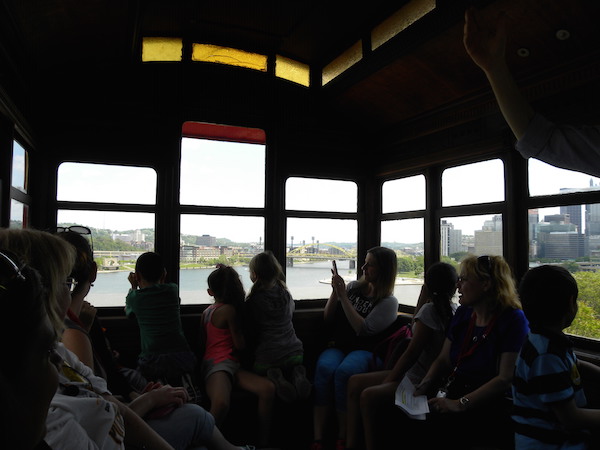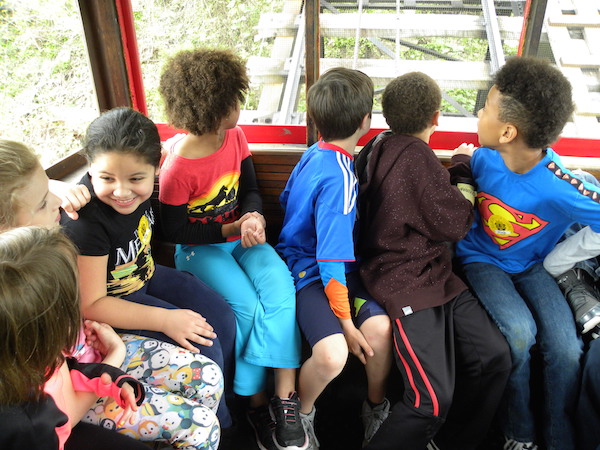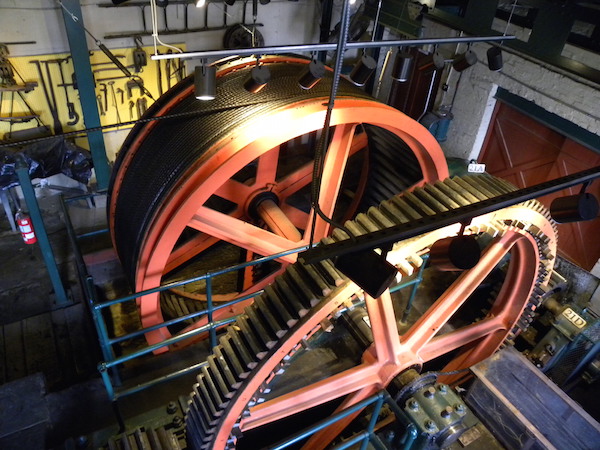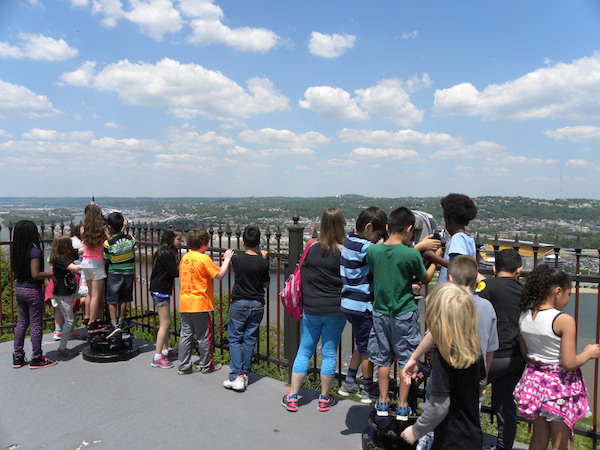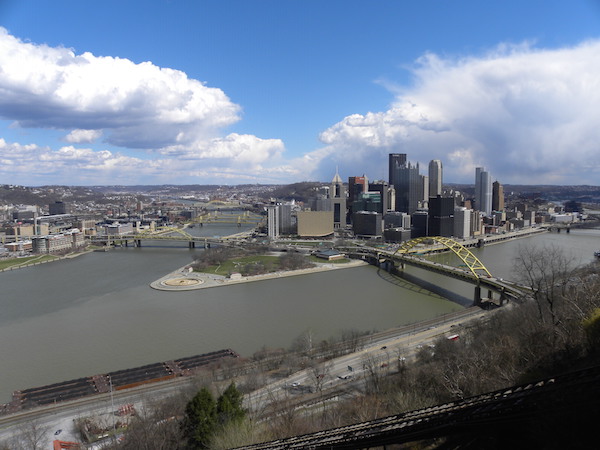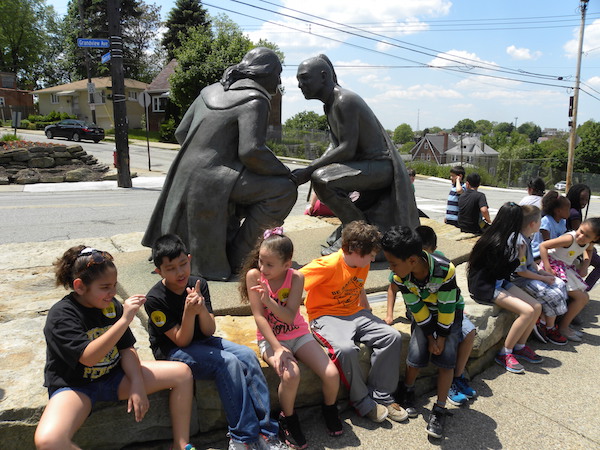
Exploring Pittsburgh with PHLF Members and Students
By Stephanie Springer, Penn State History Major and PHLF Volunteer Intern
PHLF members have been great sports, braving less than ideal weather on two weekends in May, while they explored one of the region’s oldest landmarks, newest nonprofits, and most notable neighborhoods. The first adventure, occurring Saturday, May 14, was a trip to the Walker-Ewing Log House and Pittsburgh Botanic Garden in Collier Township. The following Saturday, May 21, members visited Highland Park for an “urban hike,” including stops at the J. Horace Rudy House, St. Andrew’s Episcopal Church, Joseph Tambellini Restaurant, and the grounds of the King Estate. PHLF has also led a number of tours of parts of the city, including the Strip District and Market Square, for students of all ages. As an intern, I have had the opportunity to go on many of these tours and to learn about the diversity of the region’s built history, spanning from the rudimentary living quarters of pioneer families to the opulent homes of industrial tycoons.
The eighteenth-century Walker-Ewing Log House, the first stop on PHLF’s May 14th member tour, remained in the hands of the original family until it was donated to PHLF in 1973 and then in 1998 to the Pioneers West Historical Society that maintains it today. Members of the society gave us a tour and told us interesting stories about the lives of the people who had once called the building home. One tale that particularly caught my attention was of how some of the family’s children had been kidnapped by Native Americans and taken to Canada but, incredibly, had found their way back home. The exact date of the construction of the log house is uncertain, but the date “1762” is still visible on one of the stones of a fireplace. The question is: does this date mark the beginning of construction or is it from a prior log cabin that was burned by Indians in 1782? More research is required.
After touring the Walker-Ewing Log House, we went up the road to the Pittsburgh Botanic Garden, a newly opened venture that is turning land ruined by coal mining into a nature preserve featuring 460 acres of plush trees and greenery lined with hiking trails. The group went on a guided tour of the site and walked through seemingly endless forests, taking stops at a play area for autistic children, a sculpted dragon hidden among the foliage, and a fairytale garden containing thatched-roof fairy dollhouses that would dazzle children and adults alike. Near the end of the hike, we came upon a pond where creative techniques are being used to make once-toxic water into a livable and clean area for visitors to enjoy. I was fascinated by the way that the Botanic Garden has turned land that was once an uninhabitable hazard into something so beautiful and useful to the community. In this way, the garden is like the buildings PHLF saves—an unwanted fragment of another time that has no purpose until someone with a vision comes along and gives it a second chance.
Click through the photo gallery below for a look at the various events.
A week later, members met in Highland Park at the J. Horace Rudy House, designed by the stained-glass artist who first owned the property and for whom the home is named. The house serves as a display case for the variety of glass the artist made—some of my favorite pieces were an aqua-blue glass-tiled fireplace and a stained-glass window with a green and red tree and a scroll that reads “Life is a measure to be filled, not a cup to be drained.” The next stop on the walk, St. Andrew’s Episcopal Church, also features gorgeous stained glass from a variety of periods and artists. Tour participants then walked to Joseph Tambellini Restaurant for delicious snacks and hot beverages to warm us up on the chilly, rainy day. The tour finished with a stroll to the front lawn of the King Estate and to the Highland Park Reservoir. Monica Watt, president of the Highland Park Community Council, and PHLF docent Brady Lutsko and Historical Collections Director Al Tannler were excellent guides. Many people enthusiastically asked questions and shared their own knowledge of the area’s history throughout the afternoon. Member Buzz Wichman said of the tour, “My childhood years were spent at 1317 Sheridan Avenue and this walk brought back many wonderful memories for me.”
Students, too, have enjoyed the Pittsburgh sites they have seen through PHLF’s guided tours. I have followed many school tours in the last few weeks and have watched the joy and wonder of young people who are seeing parts of Pittsburgh for the first time. Many of these tours have been “Strip Strolls,” where students, mostly third graders from the Pittsburgh Public Schools, walk through the Strip and learn its history in the context of a book they are reading, Macaroni Boy, by Katherine Ayers. The book is about a boy growing up in the Strip District in the 1930s, so students visit St. Patrick’s, where the main character attended school, and St. Stanislaus, which was damaged in the 1936 Banana Company explosion described in the story. Throughout the tour, students act as detectives trying to solve “The Mystery of the Strip” and determine why people like to come to the area. Students learn about the Strip’s history and the diverse backgrounds of the people who came to live and work there. On the tours I have shadowed, there have been students who were born in Mexico, the Netherlands, Italy, Syria, Egypt, India, and Korea. These students taught their peers to say “thank you” in their native languages (as a result of reading the words on the exit doors in Wholey’s) and became excited about entering stores like Labad’s Mediterranean Grocery and Reyna’s Mexican Grocery. Everyone especially enjoyed receiving a free breadstick, compliments of Mancini’s, and using one of the foreign languages they had just learned to say “thank you.”
Other school tours have included one focusing on the revitalization of Market Square and many taking students on board Molly’s Trolleys to five historic sites. The students on both of these tours were thrilled to be able to visit buildings and landmarks they had never seen before, or that they had only seen from the outside. Students on the “Building Pride/Building Character” trolley tour energetically acted out a play about the French and Indian War while in the Fort Pitt Museum and appreciated the views of Pittsburgh from the top of the Duquesne Incline. Watching students’ reactions to historic places in Pittsburgh, I have seen the city through their eyes and have come to appreciate my hometown from a new perspective.
If you are interested in participating in similar events this June, then join PHLF on a walk in Polish Hill and on a Free Friday Walking Tour in the Market Square Area.

